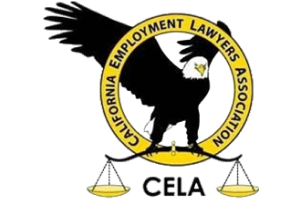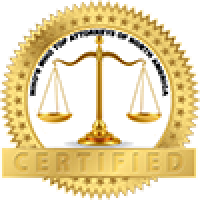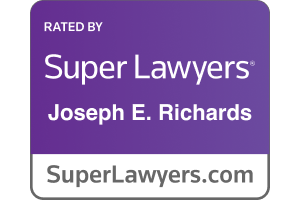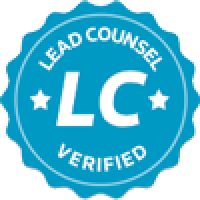- Contact Us Now (888) 883-6588 TAP TO CALL
How California Personal Injury Settlements Are Determined
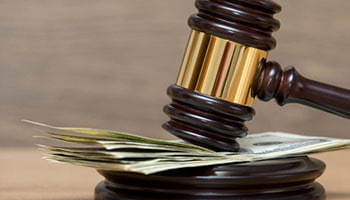
How California Personal Injury Settlements Are Determined
Personal injury claims are legal disputes that arise when one person suffers harm from an accident or injury, and someone else might be legally responsible for that harm. In California, personal injury settlements are determined through a complex process that considers various factors, such as the extent of injuries, liability, damages, and applicable laws. Understanding how these settlements are determined can provide insight into the legal framework that governs such cases in the state.
What is a Personal Injury Claim?
A personal injury claim arises when an individual suffers harm due to another party’s negligence or intentional actions. These claims can encompass many accidents and incidents, including car accidents, slip and fall accidents, medical malpractice, product defects, and more. A personal injury claim aims to seek compensation for the losses and damages incurred due to the injury, including medical expenses, lost wages, pain and suffering, and emotional distress.
Types of Personal Injury Cases
Personal injury claims encompass a wide range of accidents, incidents, and situations where an individual suffers harm due to another party’s negligence or intentional actions. Understanding the different types of personal injury cases is essential for navigating the legal process and seeking appropriate compensation. Some common types of personal injury cases in California include:
Traffic Accidents
Accidents such as car accidents, motorcycle accidents, truck accidents, and pedestrian accidents are among the most common types of personal injury cases. These accidents can result in a wide range of injuries, from minor cuts and bruises to catastrophic injuries such as spinal cord injuries, traumatic brain injuries, and paralysis. Establishing liability in accidents often involves determining factors such as negligence, reckless driving, or violations of traffic laws.
Product Malfunctions
Cases involving defective or malfunctioning products fall under product liability claims. When a defective product causes injury or harm to a consumer, the manufacturer, distributor, or retailer may be liable for damages. Product malfunction cases can include defective automobiles, faulty medical devices, dangerous pharmaceutical drugs, and poorly designed consumer goods.
Defective Medications
Personal injury claims arising from contaminated medication or pharmaceutical drugs involve situations where individuals suffer harm due to the ingestion of tainted or improperly manufactured medications. Contaminated medication cases can result in serious health complications, including adverse drug reactions, allergic reactions, and long-term health issues. Pharmaceutical companies, drug manufacturers, and healthcare providers may be held accountable for injuries caused by contaminated medication.
Medical Malpractice
Medical malpractice occurs when healthcare professionals, including doctors, nurses, surgeons, and hospitals, fail to provide a standard level of care, resulting in harm to patients. Medical malpractice cases can involve misdiagnosis, surgical errors, medication errors, birth injuries, anesthesia errors, and other instances of medical negligence. Proving medical malpractice requires demonstrating that the healthcare provider breached the standard of care, resulting in injury or harm to the patient.
Premises Liability
Premises liability cases arise when individuals are injured on someone else’s property due to hazardous conditions or negligent maintenance. Slip-and-fall accidents and injuries caused by inadequate security measures are typical examples of premises liability claims. Property owners, landlords, and business operators may be held liable for injuries sustained on their premises if they fail to maintain safe conditions or warn visitors of potential hazards.
By recognizing the various types of personal injury cases, individuals can better understand their legal rights and options for seeking compensation after suffering harm due to the negligence or misconduct of others. Consulting with a knowledgeable personal injury attorney can provide guidance and representation throughout the claims process, ensuring that injured parties receive fair and just compensation for their losses.
Determining Factors in California Personal Injury Settlements
Numerous factors come into play when determining personal injury compensation in California, shaping the outcome of compensation negotiations and legal proceedings. From establishing liability to assessing the extent of injuries and navigating insurance coverage, understanding these determining factors is crucial for individuals seeking recourse after an accident or injury.
In this section, we delve into the key elements that influence California personal injury settlements, shedding light on the complexities of the legal landscape and providing insight into how settlements are reached.
- Liability – One of the key factors in determining a personal injury settlement in California is establishing liability, or who is at fault for the accident or injury. California follows a comparative negligence system, which means that even if the injured party shares some degree of fault for the accident, they may still be entitled to compensation. However, the compensation awarded can be reduced based on the percentage of fault assigned to each party.
- Extent of Injuries – The severity and extent of the injuries suffered by the plaintiff play a significant role in determining the value of a personal injury settlement. In California, damages awarded in personal injury cases typically cover medical expenses, both current and future, associated with treating the injuries. Additionally, compensation may be awarded for lost wages, diminished earning capacity, pain and suffering, and emotional distress.
- Insurance Coverage – Insurance coverage available to both the plaintiff and the defendant can impact the outcome of a personal injury settlement. California law requires drivers to carry minimum liability insurance coverage for bodily injury and property damage. In cases involving other types of accidents, such as slip and fall incidents or medical malpractice, the availability and extent of insurance coverage held by the responsible party can affect the settlement negotiations.
- Statute of Limitations – California imposes a statute of limitations on personal injury claims, which sets a time limit for filing a lawsuit after an accident or injury occurs. In most cases, the statute of limitations for personal injury claims in California is two years from the date of the injury. But that time limit is shortened depending on certain types of claims and certain types of defendants. Failing to file a lawsuit within this timeframe can result in the loss of the right to seek compensation.
- Punitive Damages – In California, punitive damages may be awarded in personal injury cases to punish the defendant for egregious behavior and deter similar conduct. Unlike compensatory damages, which aim to compensate the plaintiff for losses suffered, punitive damages are intended to punish the defendant and serve as a deterrent to others. Courts consider factors such as the defendant’s actions, the severity of the misconduct, and the defendant’s financial status when determining whether to award punitive damages. However, punitive damages are only awarded in cases of extreme negligence or intentional wrongdoing and are subject to statutory limitations.
- Wrongful Death – In cases where a person’s death is caused by the negligent or intentional actions of another party, California law allows for wrongful death claims to be filed on behalf of the deceased person’s surviving family members. Wrongful death claims seek compensation for damages such as funeral and burial expenses, loss of financial support, loss of companionship, and emotional distress. The determination of wrongful death settlements in California involves assessing various factors, including the economic dependence of the surviving family members on the deceased, the circumstances surrounding the death, and the extent of the losses suffered. Additionally, the statute of limitations for filing a wrongful death claim in California is typically two years from the date of death, underscoring the importance of timely legal action in seeking justice for the deceased and their loved ones.
- Legal Representation – Having experienced legal representation can significantly impact the outcome of a personal injury settlement in California. Personal injury attorneys are well-versed in the state’s laws and procedures. They can advocate for their clients to negotiate fair settlements or take cases to trial if necessary. Additionally, attorneys can help gather evidence, assess damages, and navigate the complexities of the legal system.
The Personal Injury Lawsuit Process in California
Filing and litigating a personal injury lawsuit in California involves several key steps, from initial consultation with an attorney to resolution through settlement negotiations or trial. Understanding the personal injury lawsuit process is essential for individuals seeking legal recourse after suffering harm due to the negligence or misconduct of others. Below is an overview of the typical stages involved in a personal injury lawsuit in California:
- Consultation with an Attorney – The first step in pursuing a personal injury lawsuit is to consult an experienced personal injury attorney. During the initial consultation, the attorney will evaluate the case’s merits, discuss legal options, and advise the injured party on the best course of action.
- Investigation and Gathering Evidence – After agreeing to take on the case, the attorney will conduct a thorough investigation to gather evidence supporting the claim. This may involve obtaining witness statements, collecting medical records and bills, analyzing accident reports, and consulting with experts, such as accident reconstruction specialists or medical professionals.
- Filing the Complaint – Once sufficient evidence has been gathered, the attorney will file a complaint in the appropriate court, initiating the lawsuit. The complaint outlines the allegations against the defendant and the damages sought by the plaintiff.
- Discovery – During the discovery phase, both parties exchange information and evidence relevant to the case. This may include written interrogatories, requests for documents, and depositions, where witnesses and parties are questioned under oath. Discovery allows each side to assess the strengths and weaknesses of the opposing party’s case.
- Pre-Trial Motions and Settlement Negotiations – The parties may file pre-trial motions to address legal issues or seek dismissal of specific claims before trial. Additionally, settlement negotiations may occur, during which the parties attempt to resolve the case without going to trial. Settlement negotiations can be facilitated through mediation or arbitration, and if an agreement is reached, the case is resolved without needing a trial.
- Trial – If the case proceeds to trial, both parties present their arguments and evidence to a judge or jury, who will determine liability and damages. The trial process typically involves opening statements, witness testimony, evidence presentation, and closing arguments. After deliberation, the judge or jury will render a verdict, either in favor of the plaintiff or the defendant.
- Appeals – Following a trial verdict, either party may appeal the decision if they believe legal errors were made during the trial. Appeals are heard by higher courts, such as the California Court of Appeals or the California Supreme Court, and the appellate court may affirm, reverse, or modify the lower court’s decision.
Navigating California’s personal injury lawsuit process requires patience, diligence, and legal expertise. By understanding the various stages involved and working with a skilled attorney, injured parties can pursue fair compensation for their losses and hold responsible parties accountable for their actions.
Determining the Value of a California Personal Injury Claim
California personal injury settlements are determined by various factors, including liability, the extent of injuries, insurance coverage, the statute of limitations, and legal representation. By understanding these factors and how they influence the settlement process, individuals can better navigate the complexities of personal injury claims in the state. Seeking the guidance of an experienced personal injury attorney can be instrumental in achieving a favorable outcome and obtaining the compensation deserved for injuries and losses suffered.
Call Our Orange County Personal Injury Attorney For Exceptional Legal Help
If you or a member of your family has been injured by another’s negligence in Orange County, call our firm to schedule a free legal consultation to talk about how we may be able to protect your legal rights. Our Orange County personal injury lawyers are dedicated to fighting for our clients’ full compensation.
Contact our personal injury lawyers at pi.law by calling 888-745-2974 or 888-PI-LAW-PI to receive your free case review.












